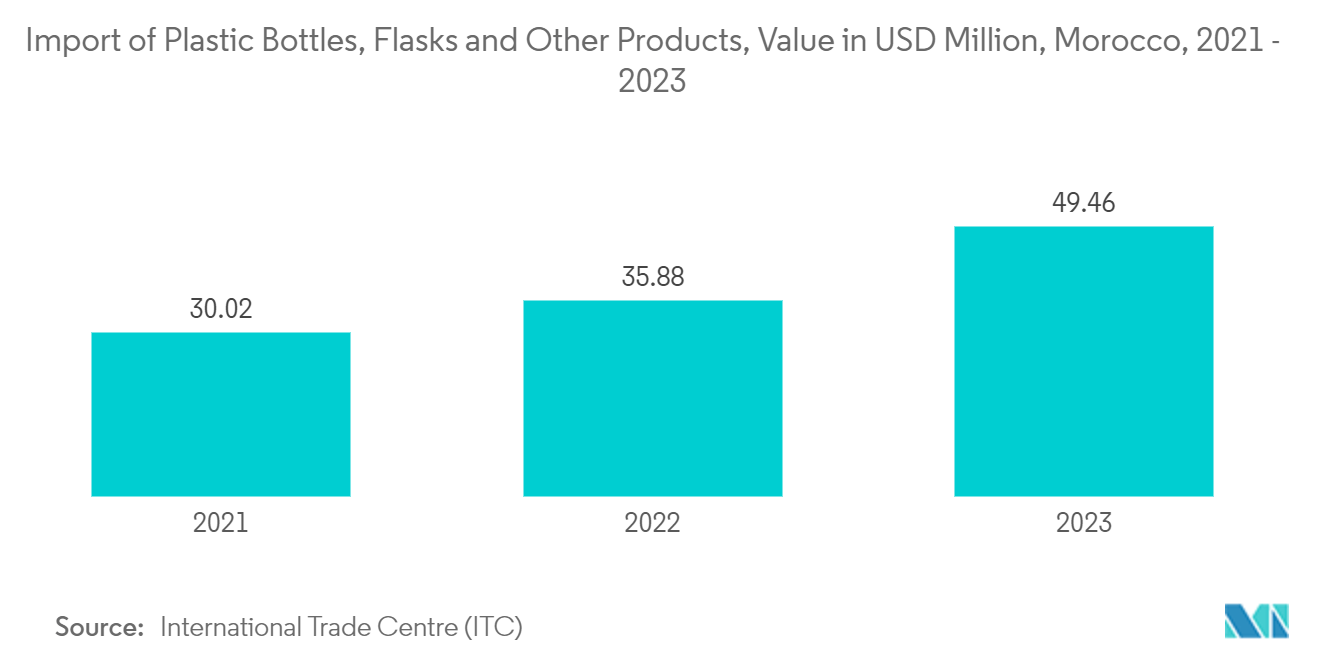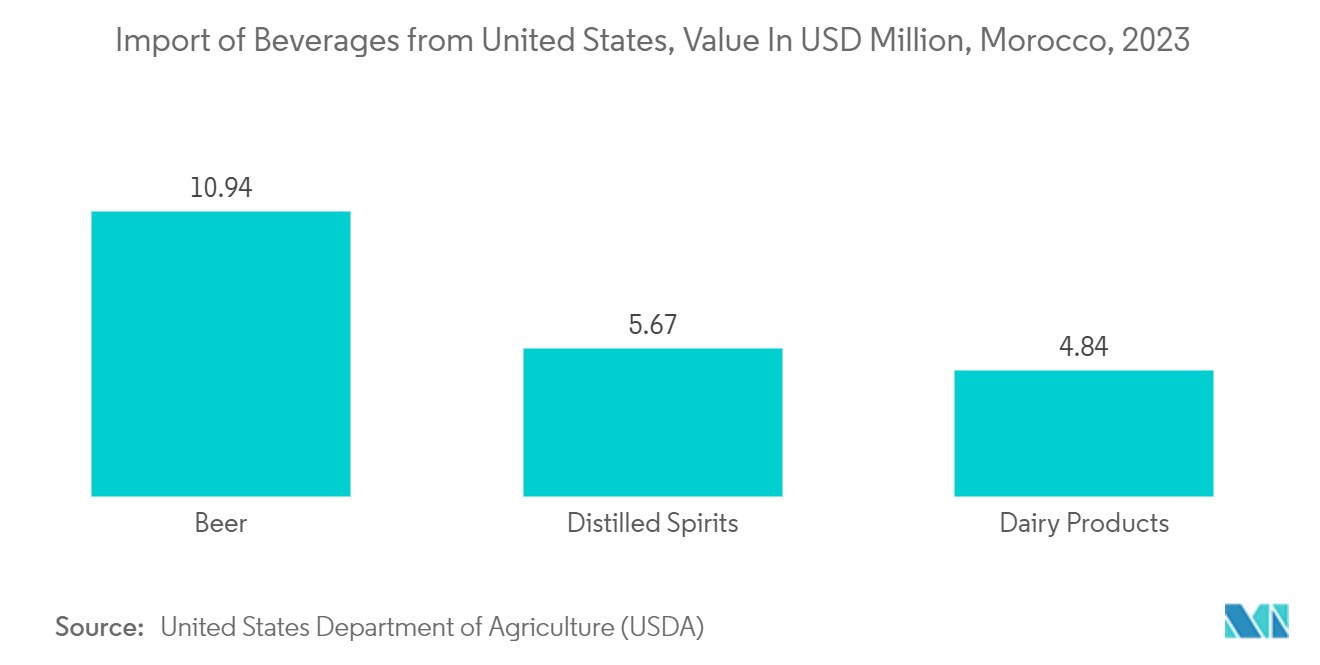Market Trends of Morocco Plastic Bottles Industry
The Polyethylene Terephthalate (PET) Segment is Estimated to Record the Largest Market Share
- PET has emerged as a crucial packaging material for bottle manufacturers throughout Morocco. Its adaptability to various shapes and sizes offers a compelling alternative to traditional glass and metal containers, solidifying its status as a preferred choice in the nation's packaging industry.
- PET bottles dominate the water packaging sector, outpacing glass and other plastic bottles due to their durability and recyclability. This trend underscores a growing preference for lightweight, durable, and cost-effective PET as the primary packaging medium for water in Morocco, fueling the market's expansion.
- Local manufacturers, including Alpla Group and Bericap Holding GmbH, produce a diverse range of PET and post-consumer recycled PET bottles. These cater to beverages, food, home care, industrial, and pharmaceutical sectors. Furthermore, the bottles' varied shapes and colors enhance their versatility across multiple applications, significantly boosting market growth.
- Morocco's rising imports of plastic bottles and related products, driven by surging demand, are bolstering market growth. Data from the International Trade Centre (ITC) reveals a jump in Morocco's import value of plastic bottles, soaring from USD 35.88 million in 2022 to USD 49.46 million in 2023.

Beverage Segment Expected to Dominate the Market
- In Morocco, rising disposable incomes and a growing workforce are leading to the adoption of Western lifestyles. This shift, coupled with an increasing consumption of ready-to-drink beverages like coffee and tea, is driving up the demand for plastic bottles. According to USDA, affluent urban centers primarily fuel the demand for food and beverage products. Notably, the middle-income class, the country's largest demographic segment, is expanding rapidly.
- Morocco's diverse landscapes, improved infrastructure, and a push to diversify entertainment has bolstered its tourism. In the first half of 2024, the country welcomed 7.4 million tourists, leading to a surge in both alcoholic and non-alcoholic beverage consumption and an anticipated rise in bottled water demand.
- Factors such as a hot and humid climate, increasing tourist arrivals, changing demographics, and rising spending power among youth drive the country's demand for carbonated soft drinks and, consequently, plastic bottles.
- Morocco's beverage imports from the United States are further fueling product demand. USDA data from 2023 highlighted Morocco's beverage imports: beer at USD 10.94 million, distilled spirits at USD 5.67 million, and dairy products at USD 4.84 million, all pointing toward a robust market growth potential.


